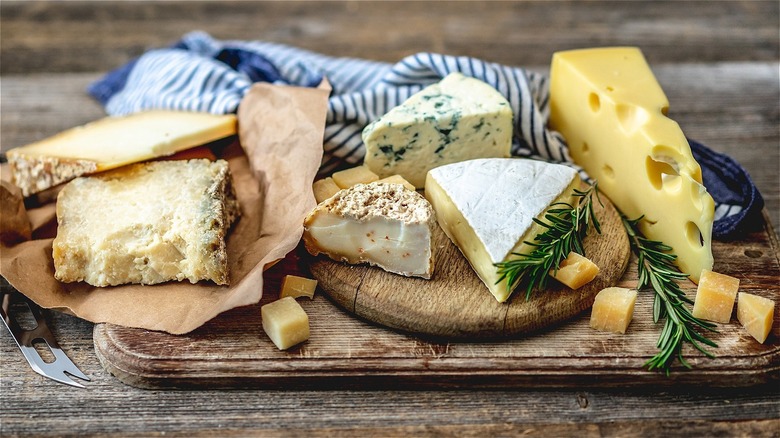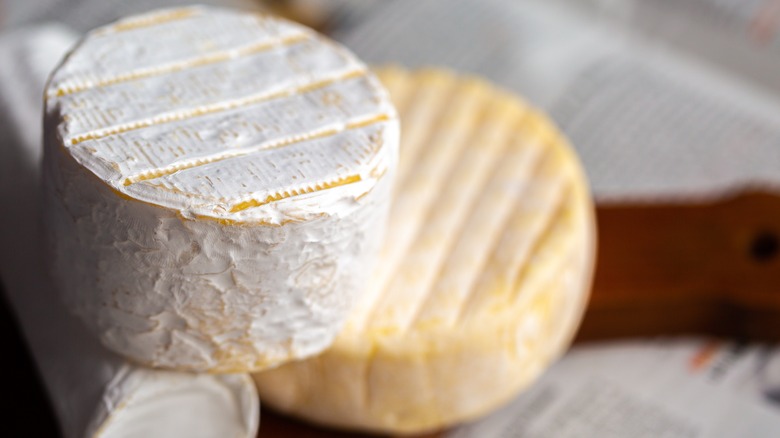How To Treat Mold On Soft Vs. Hard Cheeses
Imagine this: you wake up, brush your teeth, do your regular morning routines, and then go for a quick bite in the kitchen. You open the bread bag, but the worst possible thing has happened — the appearance of mold. Don't we all hate it? Just in case you didn't know, that bread shouldn't be eaten and you shouldn't just cut the mold off old bread. Healthline reports that the mold spreads through the bread quickly, and even though you can't see the mold on the inside, inhaling spores might make you sick. Luckily, there's a trick to avoiding moldy bread: just pop it in the freezer, and it will prevent mold formation.
Unfortunately, bread is not the only food that can get moldy. It can also happen to our beloved cheese. Statista revealed that in 2020, the average American "ate about 40.2 pounds of cheese." That's really something, but who could blame anyone for eating cheese? It's one of the most delicious foods ever invented. Still, the question remains — how should you treat mold on different types of cheese? As we all know, not all cheeses are the same, and there are some underrated cheeses you might wish you knew about sooner. They're distinguished by the type of milk, texture, and aging time, and mold can appear on any block of cheese regardless of the type. But which molds are fine to eat, and which are potentially dangerous?
The mold on hard cheeses can be scraped off, but if it appears on fresh soft cheeses, don't eat it
Can you eat moldy cheese? Usually, when mold appears, that means that the food has gone bad, but cheese is a bit different. Some cheeses are actually made with good molds, but it can be tricky to differentiate between good and bad molds. Southern Living reports that the white moldy exterior on cheese is called a bloomy rind, and the most famous example of a bloomy rind is probably Brie, so feel free to eat the whole thing. However, the situation changes when we take a look at fresh soft cheeses such as mozzarella, ricotta, and mascarpone.
If there's any mold on these types of cheese (which usually presents as reddish-orange spots), your best bet is to throw it in the trash can. Just like with bread, the mold has probably penetrated the cheese's interior, and it will disrupt the flavors and possibly give you a tummy ache. But if you're more into aged cheeses with a hard texture, such as Parmigiano-Reggiano or cheddar cheese, the mold can be safely scraped away with a knife. However, wet, moldy cheese or the smell of ammonia are warning signs to throw those cheeses away (per EatingWell). Of course, to avoid mold altogether, eat the cheese as soon as possible (if it's good enough, this shouldn't be that difficult).

